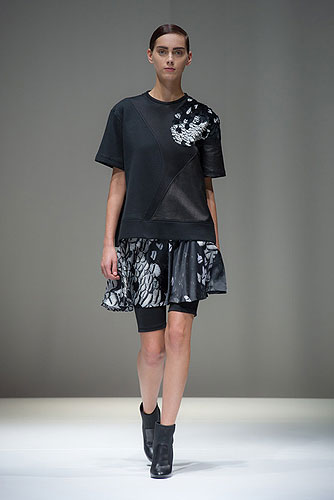






















The lounge chair and ottoman designed by Charles and Ray Eames in the 1950s are just about as iconic as pieces of furniture can be.
www.neilbarrett.comParisFashion WeekFashion Brand
The lounge chair and ottoman designed by Charles and Ray Eames in the 1950s are just about as iconic as pieces of furniture can be.
The lounge chair and ottoman designed by Charles and Ray Eames in the 1950s are just about as iconic as pieces of furniture can be. They’ve been an inspiration for generations of creative minds. There they sat, for instance, in Neil Barrett’s showroom today as a reminder of where his latest collection started out. “California Minimalism,” he called it, but just as the Eames chair has a luxurious edge to its functional form, Barrett’s strong, pared-down sportswear was almost extravagant in its intense detailing. A sweatshirt cut from ponyskin doesn’t immediately murmur “spring,” but Barrett aerated his with a million tiny perforations, cooling it down. Aeration also lightened the sweatshirt collages of leather, neoprene, and mesh, which he shaped in curving patterns based on the Eameses’ ergonomic lines. There was lightness, too, in the feathers—real and printed—that were the collection’s visual motif.
The sweatshirt, the skating skirt, the bicycle short: They were the collection’s athletic building blocks. White, black, scarlet, gray marl: The color scheme was equally straightforward. The interest came from Barrett’s attention to texture, the way that wood-grain-printed leather contoured the line of a jacket or the length of a leg, or bonded ribbing added spring to the flare of a skirt. Barrett used real wood in the striking accessories, screwing a substantial wooden heel into the base of a shoe, and molding the bottom of a bag in the same way that the Eameses’ lounge chair was shaped by molded plywood.